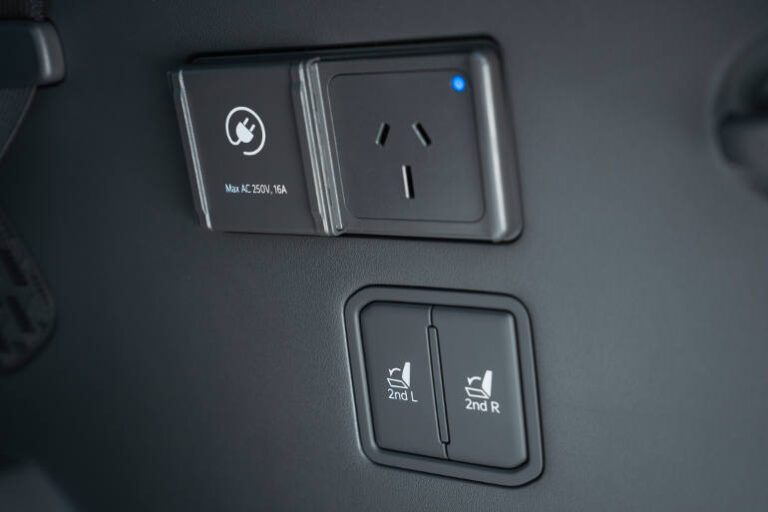New modelling from the Electric Vehicle Council (EVC) shows that electric vehicles could significantly reduce energy bills across Australia — not just for EV owners, but for every household connected to the grid.
The key lies in vehicle-to-grid (V2G) technology, also known as bidirectional charging. By allowing EVs to send stored energy back into the grid, these “batteries on wheels” can act like thousands of decentralised power plants, delivering power when it’s most needed and helping stabilise the energy system.
According to the EVC’s analysis, a modest $3,000 government rebate for a V2G charger would return over $4,500 in value over five years by reducing wholesale energy prices and lowering the need for expensive upgrades to power infrastructure. For every dollar invested in V2G support, $1.50 flows back to the community through lower bills and avoided capital expenditure.
EVC CEO Julie Delvecchio says the technology is a clear opportunity for government and consumers alike.
“Just as Australia became a rapid global leader in rooftop solar, we have the opportunity now to lead the charge in vehicle-to-grid uptake,” Ms Delvecchio said.
“EVs can store up to five times more energy than a typical home battery. That’s a huge untapped resource sitting in driveways and with the right technology, we can use it to save money and support the grid, and make the whole system more reliable for everyone.”
Real Dollars for EV Owners
For individual households, the incentive is more than just goodwill. The EVC estimates that an EV owner participating in V2G could earn around $1,000 annually by sending stored energy back to the grid during peak demand. With the right policy settings, the benefits compound — for both households and the wider community.
“V2G allows EV owners to drive down power bills not just for themselves but for all Australians,” said Ms Delvecchio.
“EV owners could earn $1,000 annually by sending energy from their electric vehicle to the grid. Over five years, they can contribute more than $4,500 in broader community benefits that help reduce energy bills for everyone.”
V2G-capable chargers currently cost around $10,000, comparable to the cost of a standard home battery. The EVC is urging the Federal Government to help accelerate uptake by expanding the $2.3 billion home battery program to include V2G chargers.
A National Energy Asset in Driveways
There are now over 350,000 EVs on Australian roads, many in middle and outer suburban areas where solar uptake is also high. With V2G, these EVs could collectively become a massive national energy resource. The EVC estimates that if 600,000 EVs were connected via V2G, they could match the output of the Eraring power station, one of the country’s largest coal-fired generators, when operating at full capacity.
“Unlocking this energy from EVs brings huge financial benefits that are in the national interest,” Ms Delvecchio said.
“We need to encourage more people to use V2G chargers, which cost about the same as the average home battery. We’d like to see the Federal Government roll out a $3,000 rebate for V2G chargers so that more Australians can use this technology to generate lower power prices for themselves and others.”
A Call for Action
To make this vision a reality, the Electric Vehicle Council has made a clear policy proposal:
- Include 50,000 V2G charger rebates in the Federal Government’s battery program by 2028.
- Offer $3,000 per charger, representing a total investment of $150 million.
- Deliver an estimated $230 million in national benefit by 2033 through reduced wholesale power prices and improved grid stability.
Ms Delvecchio stressed the importance of acting now to replicate the successful rollout of rooftop solar.
“A lesson we learnt from rooftop solar is that support from the government during the early years of adoption is essential to build momentum,” she said.
“Over time V2G chargers will become increasingly affordable and more Australians will embrace this technology. But to get the ball rolling a rebate would be enormously constructive.”
Resilience in the Face of Climate Challenges
Beyond the economic argument, V2G could also play a vital role in improving the resilience of the power grid — particularly duringheatwaves, storms, and other extreme weather events that are becoming more common due to climate change.
“V2G offers more than lower energy bills, it can also improve the resilience of the energy system especially during severe weather events,” said Ms Delvecchio. “While V2G is an emerging technology in Australia, a small group of early adopters have exported power to help stabilise the grid.”
Implications for Fleet Managers
For Fleet Managers and Sustainability Managers, the potential of V2G goes beyond corporate responsibility — it’s a strategic opportunity. Fleets that adopt V2G-capable EVs can not only reduce their own operating costs but also generate new revenue streams by feeding power back into the grid. The financial modelling provides a compelling business case, especially as V2G hardware becomes more accessible through rebate schemes.
Integrating V2G into fleet procurement strategies could also help meet net zero targets, support resilient operations during grid stress events, and position fleet operators as contributors to national energy reliability.
Bottom line
V2G is no longer a futuristic concept. It’s a near-term, high-impact opportunity that delivers shared value — for households, businesses, the grid, and the climate. With smart government support, Australia can unlock the full economic and environmental potential of its growing EV fleet.






